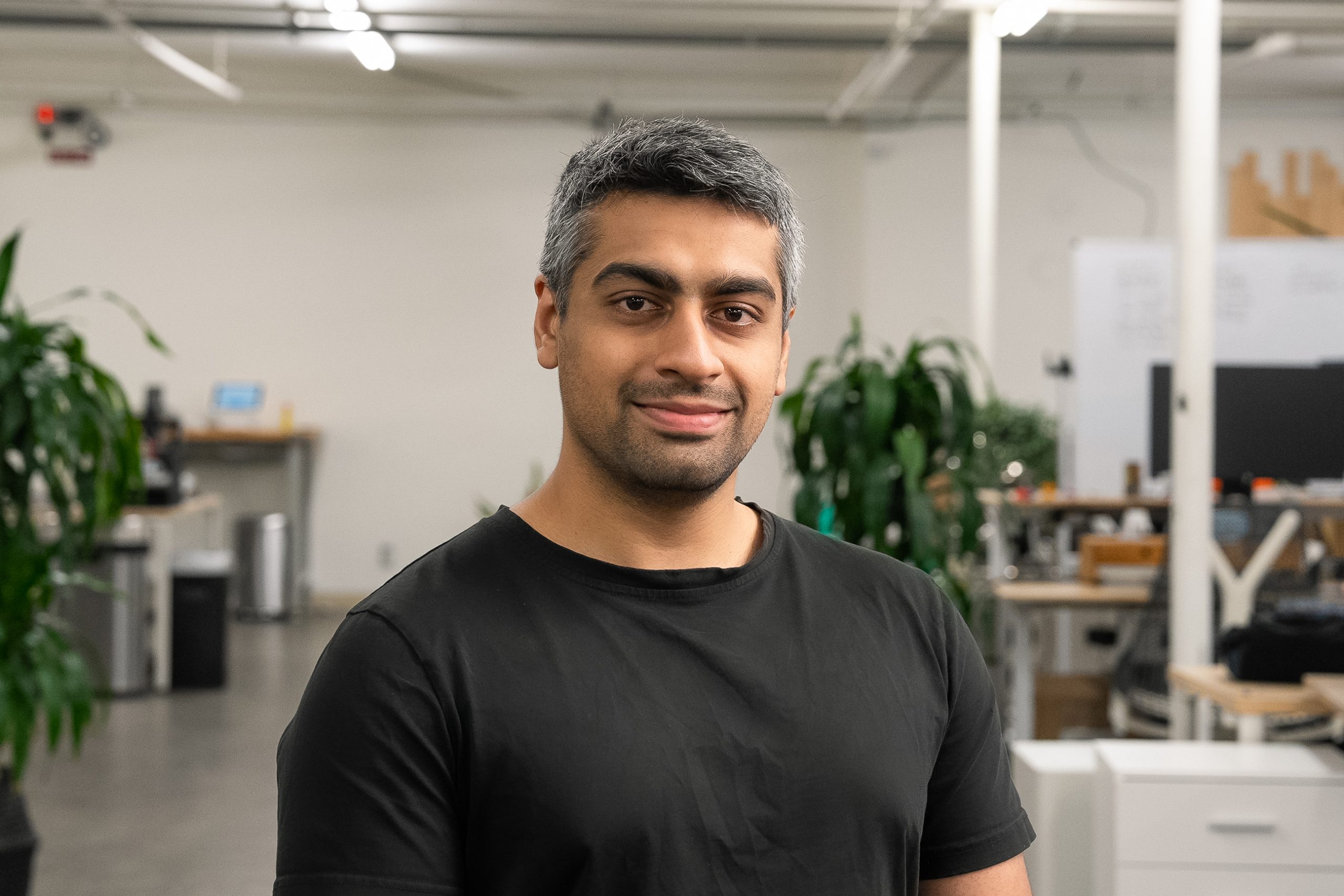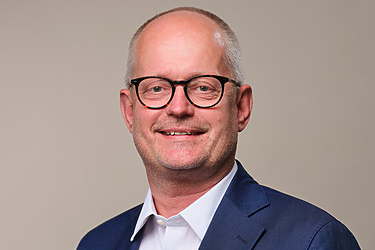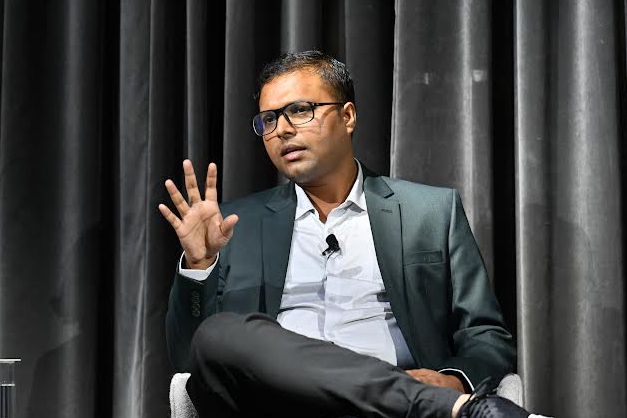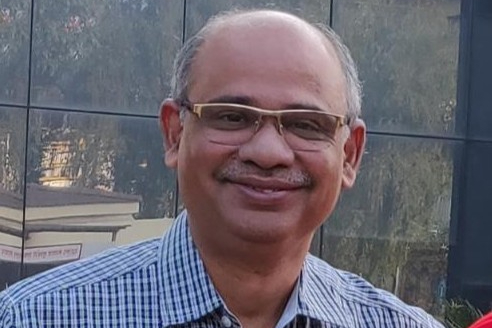
Shay Sethi – CEO of Ambercycle
Our recent interaction with Shay Sethi, CEO of Ambercycle, talks about the company’s closed-loop ecosystem, textile regeneration and its importance, and the company's future goals.Ambercycle revolutionizing fashion sustainability with regeneration and circularity
2023-05-18 15:37:53 – NoneAmbercycle, founded by Moby Ahmed and Shay Sethi during their college years at UC Davis, is making waves in the fashion industry with its innovative approach to materials and sustainability. Their journey began with a realization that — an astonishing 54% of all clothing is made from polyester, resulting in a staggering $120 billion worth of garments ending up in landfills each year. This wasteful cycle deeply troubled the founders, who recognized the need for change.
In 2015, Ambercycle was born, driven by a vision to revolutionize humanity's relationship with materials. Through the creation of a closed-loop ecosystem, Ambercycle has pioneered a system that consolidates, regenerates, and reintegrates end-of-life textiles into the supply chains of brands and manufacturers. Their first product, cycora®, is crafted from regenerated, high-quality textiles, offering a like-new material of exceptional quality. The main goal of Ambercycle is to utilize existing materials to create the resources of the future.
Our recent interaction with Shay Sethi, CEO of Ambercycle, talks about the company’s closed-loop ecosystem, textile regeneration and its importance, and the company's future goals.
YnFx: What is the story behind Ambercycle?
Sethi: My co-founder Moby and I started Ambercycle while we were still in college, studying chemistry and engineering at UC Davis. During our research, we discovered that a staggering 54% of all clothing consisted of polyester. We also learned that more than $120 billion worth of clothing was ending up in landfills each year. To us, this was a fundamentally illogical cycle of waste. After all, so much effort and creativity goes into producing clothing, only for it to be discarded and cause further damage to the environment.
We started Ambercycle in 2015 with the vision to improve humanity’s relationship with materials. Since then, we have created a closed-loop ecosystem that consolidates, regenerates, and reintegrates end-of-life textiles into the supply chains of brands and manufacturers. Our first product cycora® is made from regenerated, end-of-life textiles, and is of the highest, like-new material quality.
YnFx: What is the main goal of the company?
Sethi: Ambercycle’s mission is to use the materials of the past to create the resources of the future. We strongly believe that humanity already possesses all the materials necessary to produce new clothing without sourcing new raw materials from the earth. With our regenerated polyester cycora®, we have taken the first step in building the materials of the future. We believe that regenerated materials will be the main source of raw materials for the fashion industry in the near future.
YnFx: How do you source the various raw materials used by Ambercycle?
Sethi: At Ambercycle, we collect two main kinds of end-of-life textiles: post-consumer and post-industrial. Post-consumer textiles are sourced from places like second-hand clothing stores as well as collections from our brand partners. Meanwhile, post-industrial clothing is sourced directly from manufacturers, typically in the form of scraps that are left on their factory floors. In fact, a lesser-known fact is that up to 15% of textiles intended for clothing end up on factory floors as cut scraps, proving to be a valuable source of textile waste.
As we continue to scale our operations, we’re building collaborative supply chain partnerships and introducing more sophisticated sorting techniques to bring efficiency and simplicity to collecting the world’s end-of-life textiles.
YnFx: How would you describe your recycling technology better than the ones present in the market?
Sethi: Textile-to-textile regeneration offers true circularity versus a lot of the existing bottle rPET and mechanical recycling solutions in the market today. Mechanical recycling via bottles are commendable effort, but they don’t fully address the textile-to-textile problem, as bottles melted into fibers, without textile-to-textile systems, again end up in landfills. So, it’s a slightly longer linear lifecycle, but linear nonetheless.
Creating new textile fibers from old clothing is challenging due to the mixture of fiber types, colors and dyes, additive materials, and dirt that is present. But the upside is so great because it allows for continuous life cycles of the material being regenerated again and again. Ambercycle technology addresses this using breakthrough materials technology to break down the polyester component under mild conditions, separate the polyester from the cotton and other fibers, and then purify the polyester material from other colorants and additives, to create cycora® fiber. Our technology has been demonstrated at scale and we believe these elements put us in a position to accelerate the transition to circularity in fashion.
YnFx: What is the environmental footprint of your products, and how does it ensure sustainability?
Sethi: The fashion industry is the world’s second-largest polluting industry, accounting for nearly 10% of the world’s GHG emissions. Most of these emissions come from the production of materials, with virgin polyester production being a significant contributor.
Our regenerated solution cycora® is predicted to offset close to half the emissions associated with virgin polyester production, at the commercial scale. When you factor in the CO2 avoided from incineration in landfills, the environmental benefits far outweigh traditional petroleum-based textiles. We strongly believe that replacing traditional polyester with circular polyester is one of the most impactful actions the fashion industry can take toward decarbonization.
YnFx: What are the key milestones achieved by Ambercycle to date?
Sethi: We’ve come a long way from when we first started to play with the idea of circular materials. Our first significant milestone was in 2019 when we transformed garments discarded at the Rotterdam Marathon into brand-new bike jerseys. It was the first time the concept of circularity took a real-world form for us. The second major milestone was the development of a demo production system that could process ~15,000 t-shirts worth of textile ‘waste’ daily.
Using the demo production facility, we were able to produce much larger quantities of our regenerated polyester cycora®. We launched with eight brands, small and big, ranging from Saucony to H&M, from athletic to luxury, to ready-to-wear. Each of these brand launches is a milestone of its own because it demonstrates the real-world applicability of our circular solution.
YnFx: What are the future plans of the company?
Sethi: We are at an inflection point to achieve scale and enable ubiquitous change in the material makeup of the global closet. We aim to divert 10 million pounds of textile waste away from landfills by 2025, begin commercial-scale production of our regenerated solution, and enable the fashion industry to achieve its goal of lowering its emissions by 50% by 2030. Producing demonstration levels of material and developing process improvements has de-risked the scale-up and helped facilitate the project of designing and building our first-ever commercial plant, which we plan to announce soon.
Market Intelligence
Ask for free sample Report

experience
Customer Base
dedicated team
Countries Served Worldwide





